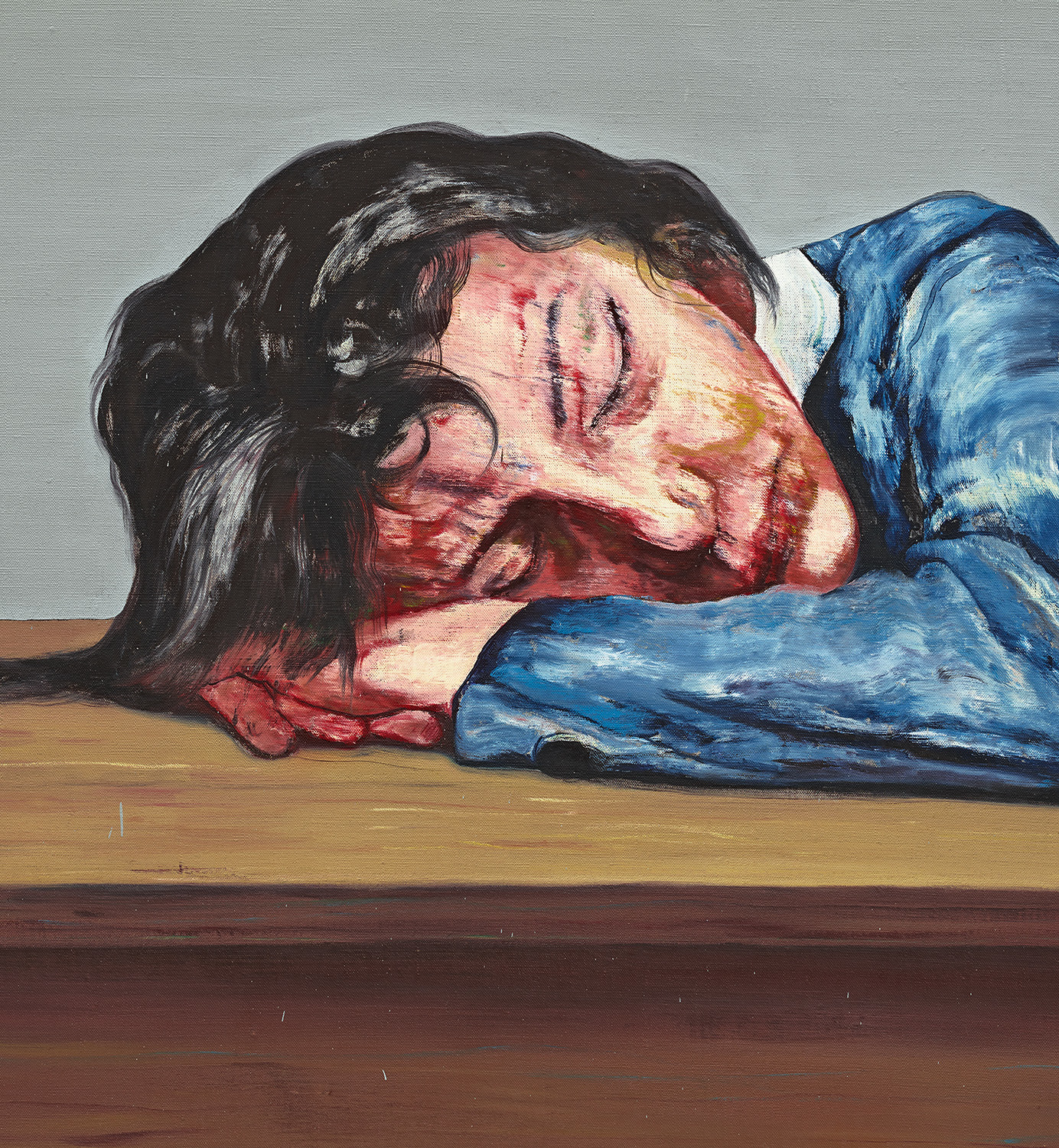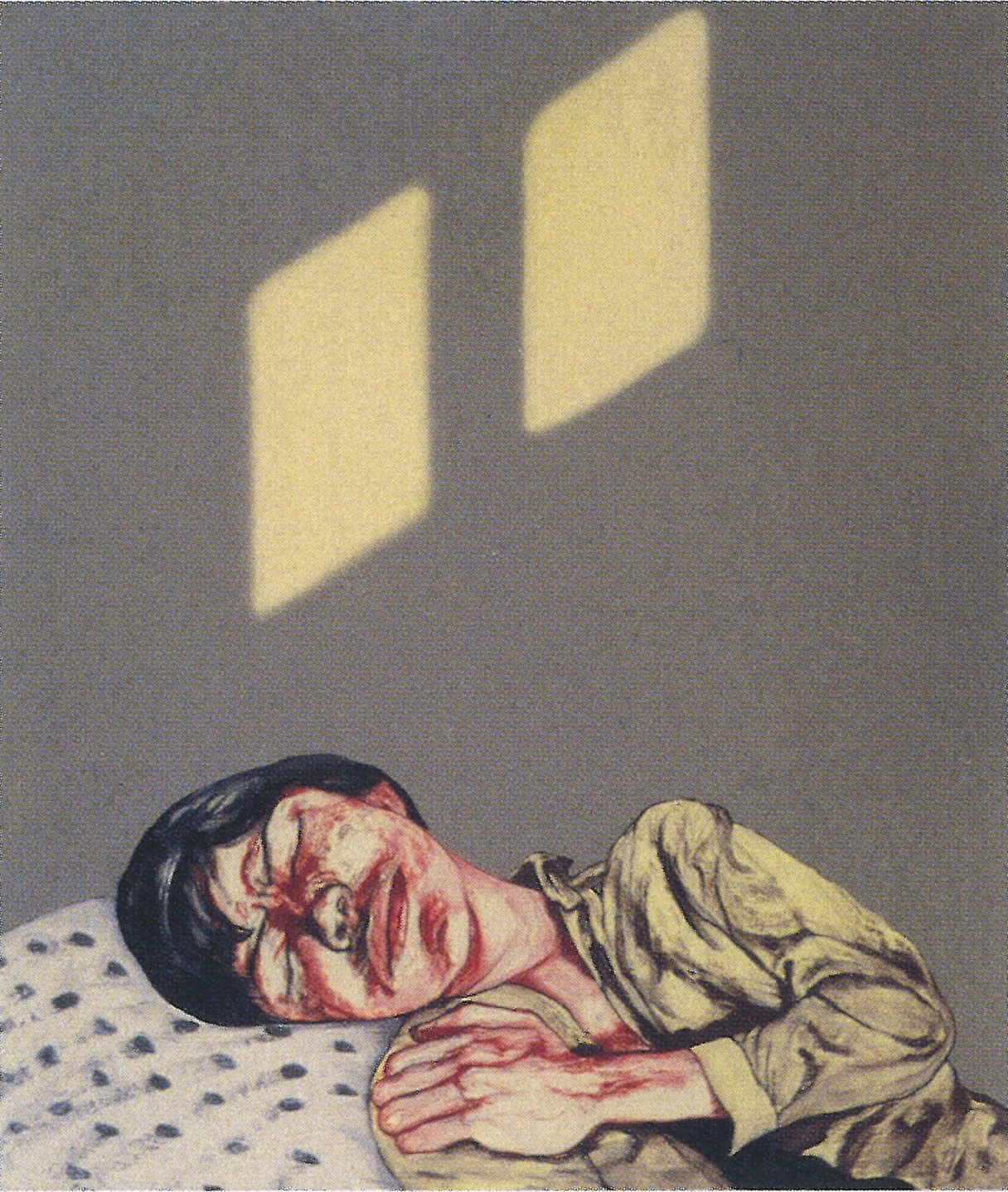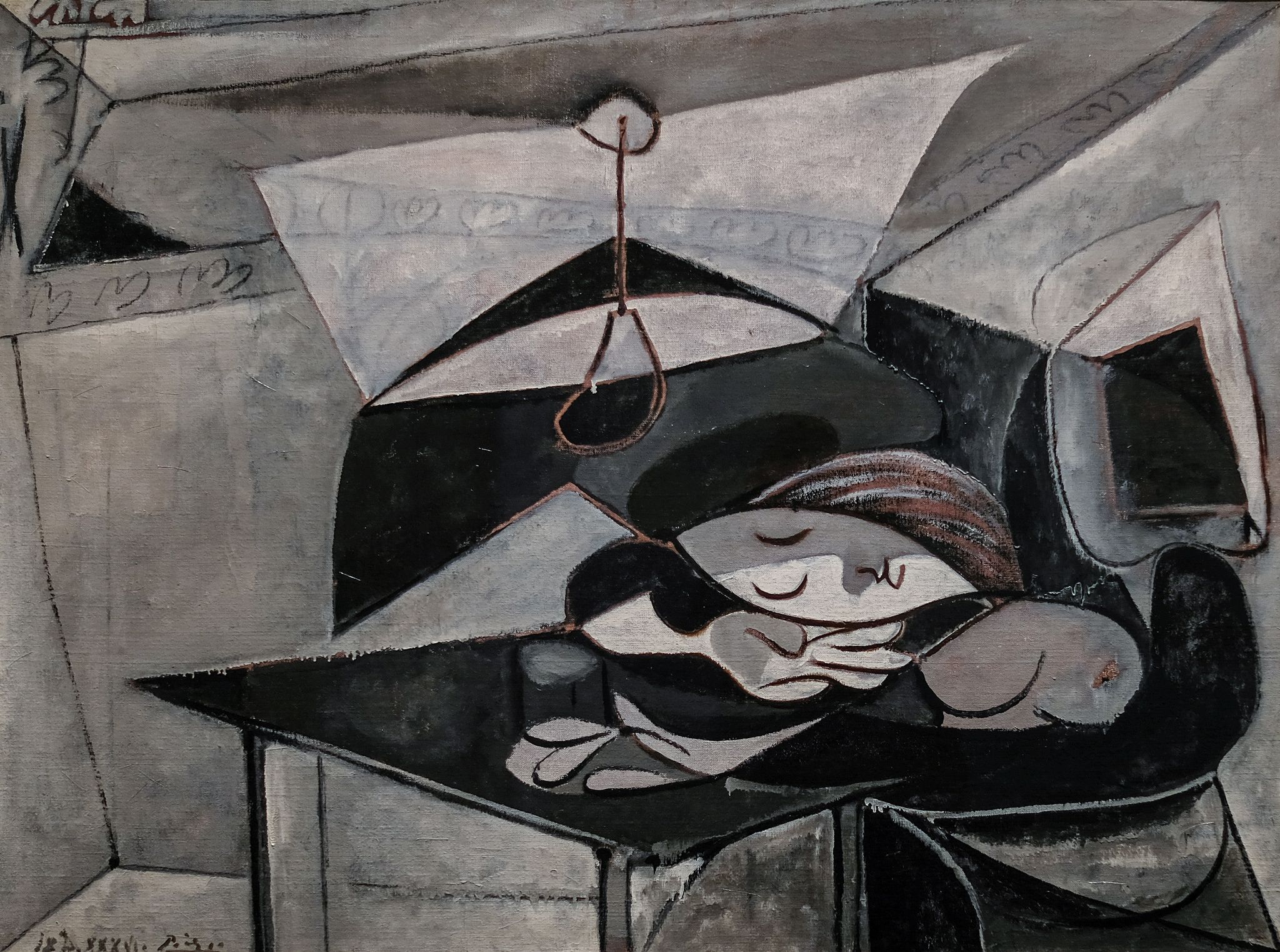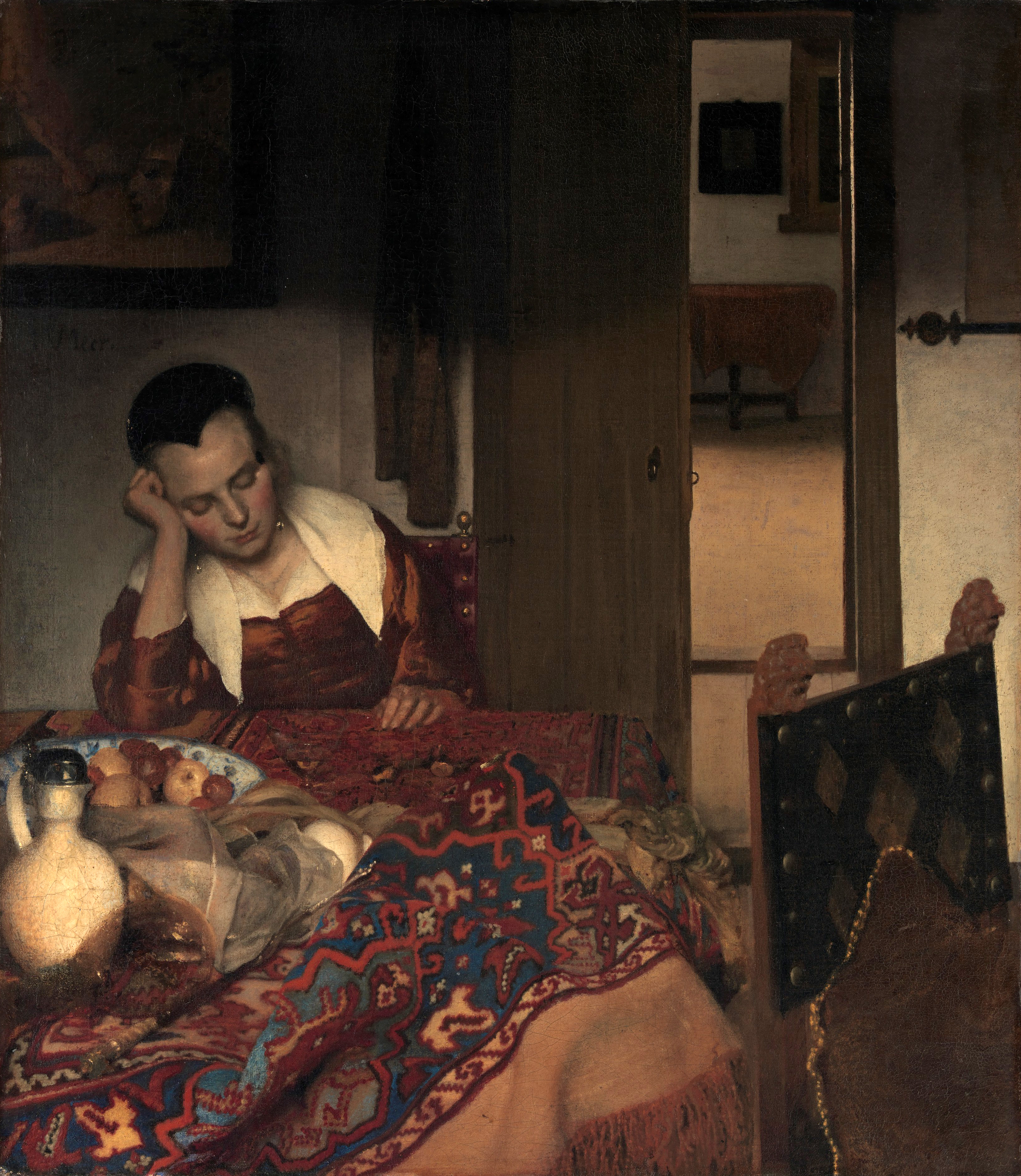





Property from an Important Collection
16Ж
Zeng Fanzhi
Untitled
signed and dated ‘Zeng Fanzhi [in Chinese] 2005 Zeng Fanzhi’ lower right
oil on canvas
200 x 150 cm. (78 3/4 x 59 in.)
Painted in 2005.
Full-Cataloguing
As one of the most globally recognised Chinese artists, Zeng Fanzhi has created a diverse body of work in which portraiture has always played a key role in his artistic expression. Developing many modes of expression towards this subject, his aesthetic restlessness epitomises the evolution of contemporary Chinese art.
After moving to Beijing in 1993, Zeng began to develop his well-known Mask series to capture the contradiction between the external pomposity and the inner emptiness of urban dwellers. The success of this series propelled the artist to embark on a new chapter instead of being tied down to a particular style. Since 2000, he began to gradually ‘unmask’ the protagonists in his canvases, straddling realism and imagination to reveal meticulous technical details and careful observations into the daily life of anonymous and ordinary individuals. Zeng once said, "I'm interested in portraying people, individual people and their attitudes and moods, experimenting and giving expression to a kind of direct reaction, all for the sake of conveying this person's expressions, emotions, and thoughts, as well as my personal feelings towards this person." (Zeng Fanzhi, quoted in i/We: The Paintings of Zeng Fanzhi, 1991-2003, Shanghai Art Museum, Shanghai, 2003, p. 56)

Zeng Fanzhi
Portrait, 1996
Executed in 2005, Untitled marks the end of the Mask series as the artist started to create works with more unrestrained gestural movements, sometimes using a palette knife to create distinct traces of paint or applying multiple brushes to the canvas at the same time. The present work depicts a girl, apparently asleep at a table as she rests her head on her hand, with skillful and concentrated oil strokes vividly outlining the ruddy complexions of her skin. The rendering of the flesh brings the artist closer to powerful metaphors of mortality, inner emotions and anxiety of his subjects, which the artist has explored in his earlier Meat and Hospital series in the 1990s. The implosive red colour are rendered here with a warmer and softer approach. The subject displays no clear countenance, without any contextual clues or references, a sense of mystery permeates the pictorial space that leaves the viewers to rely on their own visual instincts.

Pablo Picasso
Woman Asleep at a Table, 1936
Collection of the Metropolitan Museum of Art, New York City
The reduced backdrop that characterised his style during this period of transition employs a refined and solid palette of brown and grey hues, as the unique spatial organisation recalls an earlier version of the painting created in 1996. The character in Portrait still bears resemblance to the sinewy figures from the Mask series with the morbidly engorged hands composed of crimson hues – as if he had just taken off his mask to rest. Zeng strips his characters to their bare selves, and it is perhaps only in this dormant state that they no longer need to hide beneath a superficial appearance. The subject matter of the present work also echoes Johannes Vermeer’s A Maid Asleep (1656-7) and Pablo Picasso’s Woman Asleep at a Table (1936) in which the artists transfigure a confined space into an investigation on the interplay of light, colour and texture. While the richly decorated home in Vermeer’s work and the sensual gaze towards his subject in Picasso’s painting offer significant visual clues to decipher the relationship of the subject to the space they inhibit, the minimal interior in Zeng’s work conveys a more ambiguous psychological state as he transitions from the Mask series to explore a new horizon in his aesthetic inspirations and artistic directions. The diagonal light strips from Portrait are transformed into sheets of paper soaring across the picture plane of the present work, as the artist’s carefully calibrated brushworks strike a fine balance between hushed stillness and movement, all captured in a single moment.

Johannes Vermeer
A Maid Asleep, circa 1656-57
Collection of the Metropolitan Museum of Art, New York
The present work testifies to the artist’s constantly evolving oeuvre that explores the emotional state of humankind. With a practice that is unparalleled in the world of Chinese contemporary art, Zeng has garnered critical acclaim and the attention of prominent museums and collectors worldwide. The artist has presented solo shows at key galleries and institutions around in international locations, including Hauser & Wirth, London, Zurich and Hong Kong (2018); Van Gogh Museum, Amsterdam (2017); UCCA, Beijing (2016), and Gagosian Gallery, New York (2015) – confirming the unwavering interests and confidence in the artist’s ongoing creative process.
After moving to Beijing in 1993, Zeng began to develop his well-known Mask series to capture the contradiction between the external pomposity and the inner emptiness of urban dwellers. The success of this series propelled the artist to embark on a new chapter instead of being tied down to a particular style. Since 2000, he began to gradually ‘unmask’ the protagonists in his canvases, straddling realism and imagination to reveal meticulous technical details and careful observations into the daily life of anonymous and ordinary individuals. Zeng once said, "I'm interested in portraying people, individual people and their attitudes and moods, experimenting and giving expression to a kind of direct reaction, all for the sake of conveying this person's expressions, emotions, and thoughts, as well as my personal feelings towards this person." (Zeng Fanzhi, quoted in i/We: The Paintings of Zeng Fanzhi, 1991-2003, Shanghai Art Museum, Shanghai, 2003, p. 56)

Zeng Fanzhi
Portrait, 1996
Executed in 2005, Untitled marks the end of the Mask series as the artist started to create works with more unrestrained gestural movements, sometimes using a palette knife to create distinct traces of paint or applying multiple brushes to the canvas at the same time. The present work depicts a girl, apparently asleep at a table as she rests her head on her hand, with skillful and concentrated oil strokes vividly outlining the ruddy complexions of her skin. The rendering of the flesh brings the artist closer to powerful metaphors of mortality, inner emotions and anxiety of his subjects, which the artist has explored in his earlier Meat and Hospital series in the 1990s. The implosive red colour are rendered here with a warmer and softer approach. The subject displays no clear countenance, without any contextual clues or references, a sense of mystery permeates the pictorial space that leaves the viewers to rely on their own visual instincts.

Pablo Picasso
Woman Asleep at a Table, 1936
Collection of the Metropolitan Museum of Art, New York City
The reduced backdrop that characterised his style during this period of transition employs a refined and solid palette of brown and grey hues, as the unique spatial organisation recalls an earlier version of the painting created in 1996. The character in Portrait still bears resemblance to the sinewy figures from the Mask series with the morbidly engorged hands composed of crimson hues – as if he had just taken off his mask to rest. Zeng strips his characters to their bare selves, and it is perhaps only in this dormant state that they no longer need to hide beneath a superficial appearance. The subject matter of the present work also echoes Johannes Vermeer’s A Maid Asleep (1656-7) and Pablo Picasso’s Woman Asleep at a Table (1936) in which the artists transfigure a confined space into an investigation on the interplay of light, colour and texture. While the richly decorated home in Vermeer’s work and the sensual gaze towards his subject in Picasso’s painting offer significant visual clues to decipher the relationship of the subject to the space they inhibit, the minimal interior in Zeng’s work conveys a more ambiguous psychological state as he transitions from the Mask series to explore a new horizon in his aesthetic inspirations and artistic directions. The diagonal light strips from Portrait are transformed into sheets of paper soaring across the picture plane of the present work, as the artist’s carefully calibrated brushworks strike a fine balance between hushed stillness and movement, all captured in a single moment.

Johannes Vermeer
A Maid Asleep, circa 1656-57
Collection of the Metropolitan Museum of Art, New York
The present work testifies to the artist’s constantly evolving oeuvre that explores the emotional state of humankind. With a practice that is unparalleled in the world of Chinese contemporary art, Zeng has garnered critical acclaim and the attention of prominent museums and collectors worldwide. The artist has presented solo shows at key galleries and institutions around in international locations, including Hauser & Wirth, London, Zurich and Hong Kong (2018); Van Gogh Museum, Amsterdam (2017); UCCA, Beijing (2016), and Gagosian Gallery, New York (2015) – confirming the unwavering interests and confidence in the artist’s ongoing creative process.